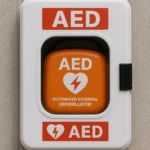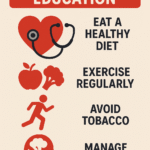
Enhance Diagnostics with AI-Enabled Imaging Tools
AI in Imaging and Diagnostics
Importance in Today’s Healthcare Landscape
AI has started to reshape medical imaging and diagnostics with the help of artificial intelligence. Today, medical professionals can utilize AI to bring greater efficiency and accuracy. No human intervention is now needed in the age of AI, and specialists have a lot more time. What is the reason for the problem?
- Faster Diagnoses: AI tools can read scans at a light speed, so there is no undue delay in the patient’s therapy.
- Improved Accuracy: AI nearly nullifies human errors, leading to better treatment results.
Relevance for All Stakeholders
For patients: Faster and more reliable systems equal better patient care.
For researchers: AI is the way to boundless explorations and breakthroughs.
For healthcare providers: An efficient step-by-step work process means using the available resources more efficiently.
Understanding AI’s function would become a unifying connector in future technology-tight healthcare. It is not only a technological solution but also a game-changer!
Understanding AI in Imaging and Diagnostics
Historical Context
AI-assisted technologies have caused a revolution in healthcare, which can be traced from mere imaging techniques to intelligent diagnostics. This breakthrough
- From Pixels to Diagnostics: Patient conditions can now be diagnosed more accurately.
- Innovative Algorithms: They can now tell you beforehand what may happen.
Impact on Medicine and Public Health
Apart from speeding up the process, AI has a much more significant effect by bringing to life a variety of new possibilities:
- Increased Accessibility: Quality control methods in diagnostics are found worldwide.
- Enhanced Patient Outcomes: A targeted set of measures is instrumental in affecting the overall health of a community.
- In short, AI has become a significant part of radiological imaging, and it’s not just today, but it is the future.
Current Landscape of AI in Imaging and Diagnostics
Innovations Driving Change
AI is rapidly changing healthcare by making imaging and diagnostics more accurate and efficient.
- Real-time analysis: AI devices are programmed to identify health problems instantly. This has been achieved, and therefore, welfare has been wholly redefined.
- Enhanced imaging: Modality-like triage makes data recovery precise.
Key Benefits
- Speed: Now, we can get a diagnosis in several minutes, which is a great way to get in front of the waiting list and thus improve outcomes.
- Precision: AI better compares patient test results with benchmarks because the former can reveal anomalies before the latter.
- **The future is
- This benefits everyone:
- Patients: Better detection means a chance for earlier treatment.
- Families: Peace of mind, knowing that nothing slips through the cracks.
- Public Health: Fewer misdiagnoses promote overall community health.
Quality of Life Improvements
With AI, treatments are more personalized. Finding the problem soon usually means the problem can be solved foolproof, i.e., the patient’s total life quality will be better than before.
- Faster results = faster care.
- More precision = better outcomes.
- Patients share stories of how timely diagnosis has transformed their lives. The future of healthcare with AI appears efficient and positive to the world.
Impact on Healthcare Professionals
AI has taken over imaging and diagnostics, bringing new opportunities for health professionals and institutions. The technology is groundbreaking, yet it challenges people in some way.
Challenges
- Training Needs: Professionals usually have to undergo lengthy training to use AI tools, which is time-consuming.
- Cost Implications: The enormous initial costs of AI integration can cause budget problems, especially in smaller institutions.
- Implementation Hurdles: The smooth change from old systems to the planned new ones makes many
- Enhanced Patient Care: Patient satisfaction increases as the procedure becomes more error-free and accurate diagnostics give better treatment results.
- In closing, although transitioning to AI-assisted tools presents specific difficulties, it is a big thing that may bring better efficacy and patient satisfaction.
The Rise of AI in Imaging and Diagnostics
Artificial intelligence in the healthcare sector, especially in imaging and diagnostics, has enhanced the experience of healthcare consumers. The convergence of AI and patient care provides several benefits and changes the healthcare system.
Key Benefits
- Enhanced Accuracy: The AI tools narrow the margin of error in diagnoses. Doctors can effectively communicate their decisions, and young patients are cured better.
- Increased Efficiency: The automation whooping speeds up the diagnostic process. Thereby, patients get their results quickly, which may help them alleviate anxiety and other emergencies that may occur.
- Data-Driven Insights: Revolutionary algorithms analyze gigabytes of data. This may lead to the prompt detection of diseases and getting medical intervention when it is most needed.
Summary
The fact that health care can become AI-dependent is undeniably actual. We set ourselves up with our seemingly new inventions. With time, those new elements finally form patient services and their promisingly better engagements.
Data Privacy Risks: Patients concerned about confidentially disclosing their health information are afraid it will be exposed to others.
- Bias in Data: If unrepresentative data is trained in the AI systems, there is a risk of implanting the wrong diagnosis into the course.
Researcher Concerns
- Over-Reliance on Technology: Healthcare professionals are scared that robot doctors can be imperfect clinicians as they rely only on the diagnosis they give without a complete patient evaluation.
- Transparency Issues: Discovering how AI concludes is like unravelling a mystery with no definite answer. This makes trust even harder.
Regulatory Challenges
- Lack of Standards: The lack of standards in the regulatory frameworks made the IT field, which is developing so fast, a place for creative misuse of technologies.
- Accountability Ambiguities: What will happen to AI when it is no longer my job? This is the question which, for the most part, is still not resolved; hence, it is a worrisome factor for the rest of the end-users and software developers.
Navigating AI in Imaging and Diagnostics
Embracing Technology
Artificial Intelligence is transforming health care! Check out what you can do to get involved:
- Explore AI Apps: Find mobile apps that use AI for image analysis. They can give you.
A Transformative Approach to Healthcare
AI is on the brink of changing the game by enhancing imaging and diagnostics and permitting healthcare professionals to think more efficiently.
- Precision: Be careful because technology may be used to gain or lose the accuracy of a patient’s diagnosis.
- Efficiency: AI will help doctors and nurses trim the long time spent on the waiting list.
- Accessibility: Equitability should be the driving force in the upturn of the health sector by overcoming the issue of equal service provision.
Emerging Career Opportunities
The biotech arena is broadening.
- AI Specialists: A variety of new profiles related to the integration of AI in healthcare.
- Data Analysts: Successfully interpret complex imaging data, enabling better decision-making.
- Ethics in AI: A job related to those ethics in technology as applied to healthcare must be present in healthcare.
- In conclusion, the future of healthcare will significantly change how we think about treatment and patient care.
Understanding AI in Imaging and Diagnostics
AI and healthcare are not separate entities but rather a union between the two that is creating an entirely new era.
Remember, AI technology is rapidly evolving. So, visiting a doctor is no longer just having a physician give you medication and treatment.
Key Takeaways:
Don’t fail to discuss integrating these technologies into your care with your doctor.
Remember, your well-being is












Post Comment